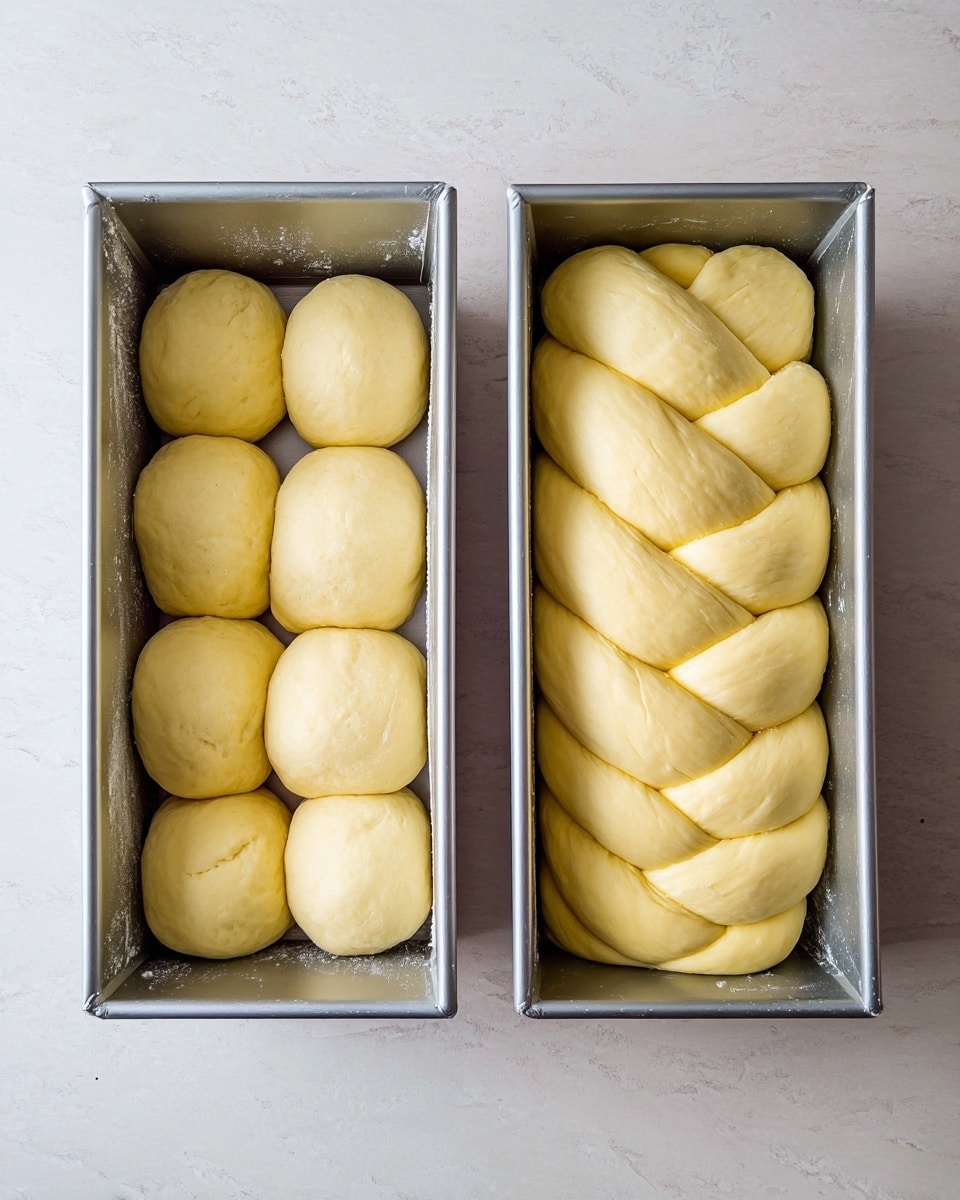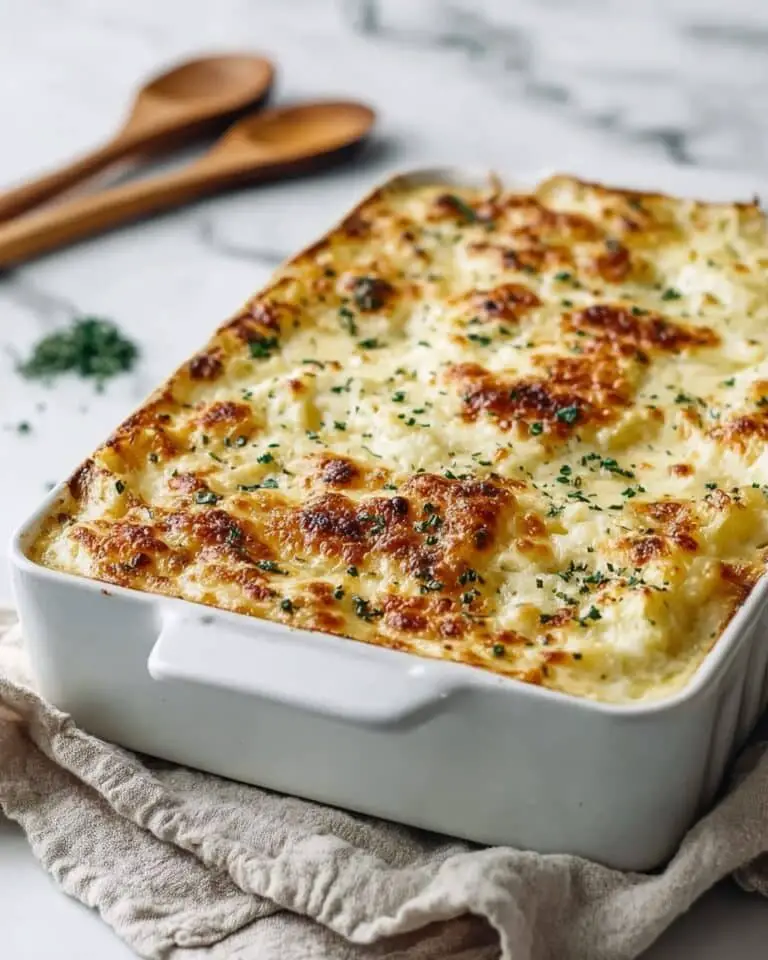If you’ve ever dreamed of filling your kitchen with the aroma of freshly baked bread that’s rich, buttery, and irresistibly soft, then this Homemade Brioche Bread Recipe is your new best friend. This classic French bread is the perfect combination of a tender crumb and a golden crust, achieved by the magic of slowly developing dough enriched with eggs and butter. Whether you’re baking for a cozy breakfast, an elegant brunch, or just to treat yourself, this Homemade Brioche Bread Recipe brings a little touch of bakery-level indulgence right to your home. Get ready to dive into a doughy adventure that’s as rewarding as it is delicious!
Ingredients You’ll Need

This recipe keeps it straightforward with pantry staples that every baker loves. Each item plays a crucial role, from activating the yeast to giving the bread its signature buttery tenderness and delicate crumb structure.
- 120 mL warm milk: Softens the dough and activates the yeast for a gentle rise.
- 9 g active dry yeast: The essential agent that makes the dough rise and become airy.
- 10 mL honey: Adds just the right hint of sweetness and helps nourish the yeast.
- 5 large eggs: Provide richness and structure; using 4 eggs plus 2 yolks works as a substitute.
- 1 large egg yolk: Intensifies the bread’s richness and contributes to the golden color.
- 10 mL vanilla extract: Infuses a subtle warmth that complements the buttery dough.
- 60 g granulated white sugar: Balances flavors and aids in browning during baking.
- 500 g all-purpose flour: The backbone of the bread’s structure.
- 1 ½ tsp fine sea salt: Enhances flavor without overpowering sweetness.
- 250 g unsalted butter: The star ingredient that makes brioche so wonderfully tender and rich.
How to Make Homemade Brioche Bread Recipe
Step 1: Activating the Yeast
Start by whisking together your warm milk, active dry yeast, and honey in a bowl. Then, set this mixture aside for about 10 minutes. This step is so important because it wakes up the yeast, allowing it to bubble and foam, ensuring your brioche dough will rise beautifully.
Step 2: Combining the Wet Ingredients
Next, gently whisk in your eggs and egg yolk into the activated yeast mixture, making sure to lightly break the yolks. This helps create a cohesive mixture while adding the richness that is signature to brioche bread dough.
Step 3: Adding the Dry Ingredients
Now it’s time to add vanilla extract, sugar, flour, and sea salt into the mix. Stir everything together until you’ve got a scraggly dough forming. This may look rough now but don’t worry – that’s just the beginning.
Step 4: Kneading and Incorporating Butter
Switch to your dough hook if you’re using a stand mixer, and knead the dough on speed 2 or 3 for 3 to 5 minutes. Then divide your butter into four portions and begin adding it to the dough gradually. Incorporate each portion with a couple of minutes of kneading, scraping down the bowl as needed. The butter will slowly emulsify into the dough, making it incredibly soft and silky. The kneading time here is key – you want to keep going until the dough feels soft, slightly tacky, but not sticky, and it lifts cleanly from the bowl.
Step 5: Shaping the Dough Ball and First Rise
Flour your work surface and hands lightly, then turn out the dough. Fold the edges toward the center and flip the dough to form a tight smooth ball. Place it back into the bowl and cover it loosely. Let it rise in a warm spot for about an hour, until the dough has doubled in size. Here, patience makes all the difference in getting that airy texture we all love.
Step 6: Deflating and Chilling the Dough
After the first rise, gently press the dough to deflate it and repeat the folding process to develop structure. Return the dough to the bowl, cover, and pop it in the fridge for at least 8 hours or overnight. This slow chilling step not only enhances flavor but also makes the dough easier to work with during shaping.
Step 7: Shaping the Brioche Loaves
Remove the chilled dough and butter-plus-flour your loaf pans. Divide the dough into two equal parts for two loaves. You can choose to shape your bread as a traditional Nantaise brioche with multiple small dough balls nestled in the pan, a lovely braided loaf, or a regular loaf shape. Each shape offers a unique presentation and experience, so pick based on your mood or occasion.
Step 8: Proofing and Baking
Let your shaped dough proof in covered pans for about 2 hours until almost doubled and nearly filling the pans. Preheat your oven to 325°F (163°C). If you want to get fancy, brush the tops with egg wash and sprinkle on sugar pearls for that sweet crunch. Bake the loaves for 35 to 45 minutes until golden brown with an internal temperature of around 190°F (88°C). Finally, cool the bread on a rack before slicing your masterpiece.
How to Serve Homemade Brioche Bread Recipe

Garnishes
While brioche is heavenly on its own, a dab of butter or a drizzle of honey over warm slices enhances its buttery sweetness. For a touch of elegance, try a sprinkle of powdered sugar or fresh berries on top for brunch.
Side Dishes
This bread shines alongside rich dishes like creamy egg salad, smoked salmon, or even a smoky chili. It also pairs beautifully with soups, especially velvety butternut squash or tomato bisque, soaking up the flavors like a dream.
Creative Ways to Present
Transform this Homemade Brioche Bread Recipe into French toast or bread pudding for an extraordinary dessert or breakfast twist. Alternatively, slice it thickly for gourmet sandwiches or buns. Its tender crumb holds up well and adds a luxurious touch to any meal.
Make Ahead and Storage
Storing Leftovers
Once cooled completely, brioche keeps best in an airtight container at room temperature for up to 3 days. Keep it wrapped tightly to maintain the soft, fluffy texture.
Freezing
If you want to extend shelf life, slice your brioche first and freeze it in a zip-top bag. This lets you pull out just what you need for toast or sandwiches. Frozen brioche retains its quality for up to 3 months.
Reheating
To refresh frozen or leftover brioche, toast slices gently or warm whole or partial loaves wrapped in foil at 325°F (163°C) for 10 to 15 minutes. This brings back the bread’s buttery softness and bakery-fresh aroma.
FAQs
Can I make this Homemade Brioche Bread Recipe without a stand mixer?
Absolutely! You can knead the dough by hand, though it will take longer—around 20 to 30 minutes—for the dough to reach the perfect soft and elastic consistency. Just be patient, and enjoy the tactile experience of bread making.
Is there a way to make this recipe dairy-free?
You can substitute the butter with a high-quality dairy-free margarine and replace milk with almond, soy, or oat milk. Keep in mind the flavor and texture might be slightly different, but it will still be delicious!
Why does the dough need to chill in the fridge overnight?
Chilling the dough slows fermentation, enhancing the flavor and making the dough easier to handle when shaping. It also develops the crumb’s texture, giving you that tender, rich brioche everyone loves.
How long does brioche bread keep fresh?
Stored properly at room temperature in an airtight container, brioche stays fresh for about 3 days. For longer storage, freezing is best.
Can I add fillings or flavors to this Homemade Brioche Bread Recipe?
Yes! You can add chocolate chips, cinnamon, dried fruit, or even herbs. Just fold these in gently after the initial mixing stage to avoid overworking your dough.
Final Thoughts
Embracing the process of this Homemade Brioche Bread Recipe is truly a joy. It’s a wonderful way to bring a bakery staple into your home kitchen and impress friends and family with your baking skills. The rewarding aroma, the soft, buttery crumb, and the golden crust combine to create a bread that’s both comforting and sophisticated. Give it a try — you won’t regret it!
PrintHomemade Brioche Bread Recipe
This classic Brioche Bread Recipe produces soft, buttery, and rich loaves perfect for breakfast or sandwiches. Made with active dry yeast, eggs, butter, and a touch of honey and vanilla, the dough is kneaded thoroughly for a tender crumb. You can shape the dough into traditional Nantaise brioche balls, a braided loaf, or a regular loaf. The brioche is proofed, baked until golden, and finished with an optional egg wash and sugar pearls for sweet crunch.
- Prep Time: 30 minutes
- Cook Time: 40 minutes
- Total Time: 25 hours 45 minutes
- Yield: 30 servings (2 large brioche loaves)
- Category: Bread
- Method: Baking
- Cuisine: French
Ingredients
Liquids & Yeast
- 120 mL warm milk
- 9 g active dry yeast
- 10 mL honey
- 10 mL vanilla extract
Eggs
- 5 large eggs (or 4 large eggs)
- 1 large egg yolk (or 2 yolks if using 4 eggs)
Dry Ingredients
- 60 g granulated white sugar (about 5 tbsp)
- 500 g all-purpose flour
- 1 ½ tsp fine sea salt
Fats
- 250 g unsalted butter
Instructions
- Activate Yeast: Combine warm milk, yeast, and honey in a mixing bowl. Whisk gently and set aside for 10 minutes to let the yeast activate and become foamy.
- Mix Eggs and Flavoring: Add eggs and egg yolks to the bowl and whisk gently to break the yolks. Stir in vanilla extract.
- Add Dry Ingredients and Form Dough: Add sugar, flour, and sea salt to the bowl. Mix to form a rough, scraggly dough.
- Initial Kneading: Using a dough hook on speed 2 or 3, knead the dough for about 3-5 minutes.
- Incorporate Butter Gradually: Divide butter into 4 portions. Add the first portion gradually after initial kneading, letting it mix fully into the dough over about 2 minutes. Repeat with the remaining butter portions, kneading 2-3 minutes after each addition. Stop mixer occasionally to scrape bowl sides and bottom.
- Final Kneading: Once all butter is incorporated, scrape down bowl and knead dough at speed 5 or 6 for 5-15 minutes until dough is soft, tacky but not sticky, and lifts cleanly from the bowl.
- Shape Dough Ball: Flour work surface and hands lightly. Turn dough onto surface, fold edges toward the middle, then flip and shape into a tight ball using the heel of your palms.
- First Rise: Place dough ball back into bowl and let it rise in a warm place (72°F) until doubled in size, about 1 hour.
- Deflate and Fold: Turn dough out onto floured surface, gently press down to deflate. Fold edges toward middle again, flip (seam side down), shape into smooth, taut ball. Return to bowl.
- Chill Dough: Cover and refrigerate for at least 8 hours or up to 24 hours to develop flavor and make handling easier.
- Prepare Loaf Pans: Butter and dust two 8.5 x 4 inch or 9 x 5 inch loaf pans with flour. Have flour, pastry brush, and dough scraper ready.
- Divide Dough for Shaping: Turn chilled dough onto floured surface, lightly flatten and weigh. Divide dough equally into two portions.
- Shape Nantaise Loaf (Option 1): Take one portion, divide into 8 equal pieces. Fold edges of each piece inward and roll into smooth balls. Place balls in loaf pan in zig-zag, flatten slightly, cover with plastic wrap.
- Shape Braided Loaf (Option 2): Divide one portion into 3 equal pieces. Flatten each into rectangles and roll tightly into 14 inch ropes. Pinch ends together and braid ropes. Pinch ends and flatten to tuck in loaf shape. Place in loaf pan and cover.
- Shape Regular Loaf (Option 3): Shape dough into classic loaf shape following white bread loaf shaping method from referenced recipe.
- Proof Loaves: Cover pans with plastic wrap and proof the dough at room temperature for about 2 hours until doubled in size and nearly reaching the top of the pan.
- Preheat Oven: Preheat oven to 325°F (163°C).
- Egg Wash and Optional Topping: Brush the tops of proofed loaves with egg wash (beaten egg). Optionally sprinkle Swedish sugar pearls for added sweetness and crunch.
- Bake: Bake loaves in the preheated oven for 35-45 minutes until golden brown on top and internal temperature reaches 190°F (88°C).
- Cool Slightly: Remove bread from oven and let cool in pans for about 5 minutes.
- Remove and Cool Completely: Carefully remove loaves from pans onto cooling racks. Let bread cool completely before slicing or storing.
- Storage: Store brioche bread in airtight container to maintain freshness.
Notes
- The dough will be very soft and tacky; avoid adding too much extra flour as it can make the bread dense.
- Chilling the dough overnight enhances flavor and makes shaping easier.
- Butter and dust loaf pans properly to prevent sticking.
- Proofing times may vary based on ambient temperature; look for dough doubled in size.
- Use a thermometer to confirm bread is fully baked with an internal temperature of 190°F (88°C).
- Optional sugar pearl topping adds sweetness and crunch typical in traditional brioche.
- You can use 4 eggs and 2 yolks instead of 5 whole eggs as a variation.








